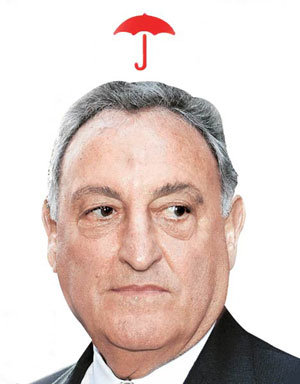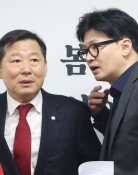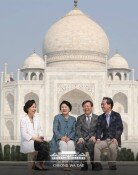I Am Citigroup Itself

When I got married in 1955, I had no job and no money so I had to borrow money from my parents for the wedding. My parents-in-law did not recognize me and as if threatening me, they said, If my daughter wants to live with us again, she can always come back. When my wife was 9 months pregnant, I finally found a job as an office worker at a small company. I did not hesitate to ask for money from my father and father-in-law. When I received two-weeks worth of money for living from them, most of my neighbors were enraged, saying, You are receiving assistance from your rich parents. I sometimes wasted money of my parents friends.
This is the story about the early days of Citigroup CEO Sandy Weill, who is now called a super star of the U.S. financial industry or legendary CEO. His life epitomizes the classic American dream. Starting as a rank-and-file worker of a small securities exchange with no money, Sandy Weill created one of the largest companies in the world in 40 years. Citigroup is a comprehensive financial corporation, which provides various financial services such as banking, stock exchange services and asset management in about 100 countries. The company as of the end of 2006 recorded $1.88 trillion in assets and $21.5 billion in net income, one of the worlds largest.
This book is his success story written by Sandy Weill himself. The 600-page book well illustrates all the things he went through to set up one of the worlds best corporations with practically nothing in his pocket. He points out his two secrets to success as coveting brand power and utilization others insecurities. Among the two, coveting brands is his trademark. He turned his companys brand from Commercial Credit to Primerica to Travelers Group and finally to Citigroup. He has always bet the future of his company on an acquisition of a corporation with better consumer awareness and reputation. He emphasizes the positive aspect of brand coveting, saying, Through acquisitions, we were able to bring the best and brightest experts and create an even stronger corporation. During the acquisition process, he uses methods of utilizing others insecurities. Sandy Weill exercises conservatism when it comes to financial management, so he has preferred stable management of funds, avoiding risky investment. By doing so, Sandy Weill targeted for acquisition well-known companies going through financial difficulties stemming from economic instability. In most cases, his strategy led to success.
However, not all cases were successful. The prime example was his decision to sell off Shearson to American Express. Given the brand power of American Express, he agreed to merge Shearson with American Express with the guarantee of a presidents position. However, four years later, he lost the position in a power struggle. Sandy Weill later pointed to the merger as the biggest mistake of his life. Failure told by a successful man, though, just adds more flavor to the book, like a condiment. The title of his book is The Real Deal (2006).
polaris@donga.com
Headline News
- 55%of SNU Hospital professors start indefinite suspension from today
- DP intends to complete the composition of National Assembly this week
- Too high bonus for head of reconstruction associations causes controversy
- 13 infectious diseases sharply increase across the world
- International Skating Union revises major rules







